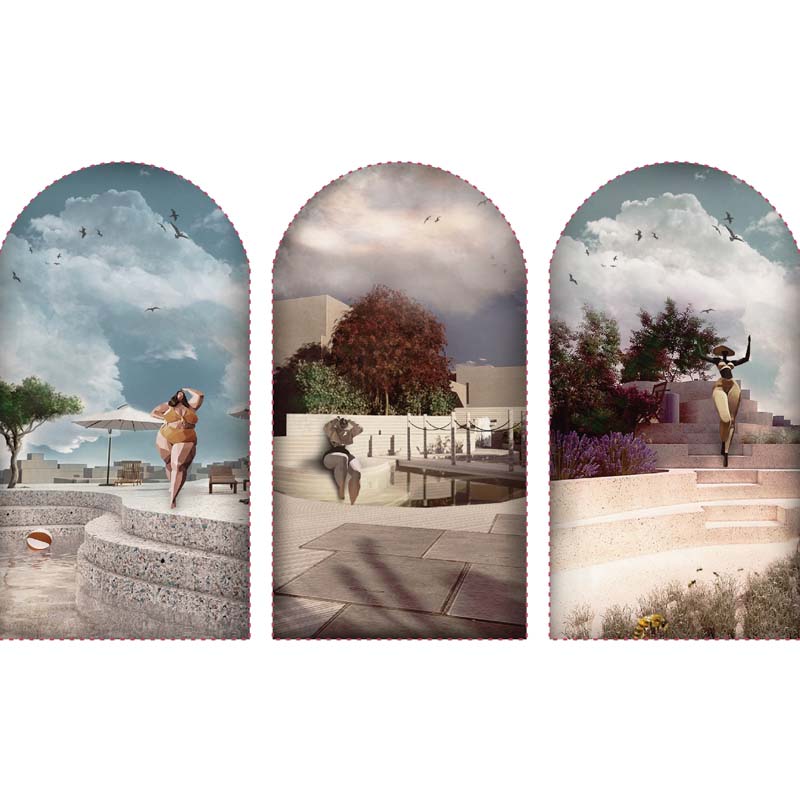

Athens is a city characterized by contradictions. We live the public space or the lack of it through the screens of a smartphone. We live the city on the move, with hopeful glances at the clearest horizon and transformed images at eye level. We travel as digital nomads in every narrative and image of the world, anticipating the physical experience.
Looking for a mechanism to redefine the new ridge of the city, key questions were asked.
In the empty space of the flat roof, in the absence of the built, the idea of the city is concentrated. The social life unfolds in many forms, performing the acquaintance with the city as a collective experience. Experiencing the Greek existence and observing it, the coastal, mountainous and plain landscapes emerged with the main desirable landscapes with emphasis on crops.
The selected area for the implementation of this proposal is bordered by Kallidromiou, Mavromichali, Isavron and Charilaou Trikoupi streets. An area with a special character and remarkable history that over the years has served as a beacon of changes.
The plot of each intervention is any flat roof in the city. Playing with the existing ideal solid of the area and increasing it in height, we are looking for a new horizon.
It is considered an ideal place based on the character and history of the area, so the intention for change will meet fertile ground for its implementation.
Supervisor: Gavrilou Evelyn
Reference Number: 909
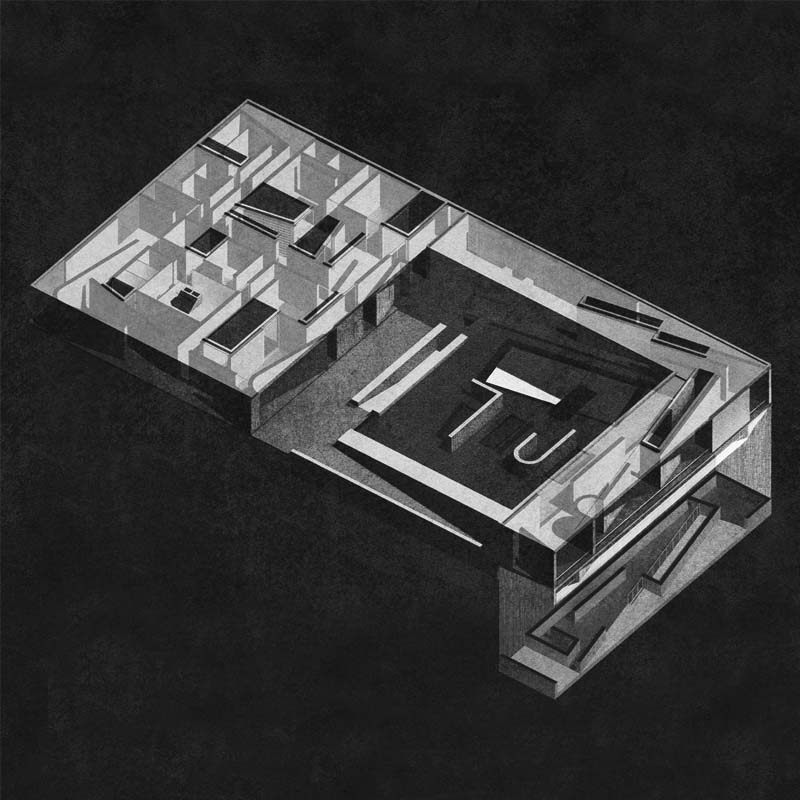

Funerary cremation, a practice originating in the distant past, is becoming more and more acceptable even in traditionally opposing countries, such as Greece. Nowadays, it concerns a personal, conscious decision that is not only related to religious or cultural reasons but environmental, health or economical ones as well. In our country, the lack of a modern crematorium, up until recently, forced many citizens to carry out the funerary procedures of their loved ones in neighbouring countries. The opening of the first private cremation facility in Ritsona Evia, in September 2019, and the expected launch of a public crematorium in Patras, a decade from now, prompted us to conceive and present a new proposal for a similar installation, located in north-western Greece. Its specific location is in Kato Kalentini, in Arta, near the artificial lake of Pournari, where the submerged settlement of Faggos creates a landscape both eerie and serene. The building's design lays emphasis on the precise division of spaces: corridors, where rough and smooth surfaces alternate, organise the floor plan in distinct zones depending on their function. Entering the premises becomes a gradual process since movement is being defined by large concrete walls. Natural light enters dynamically from the atriums, accompanying the visitor's meandering inside the building. On the exterior, the gesture of immersion is semantically tied to the mythological descent into the Underworld, while the enclosed garden is a place of contemplation, remembrance and, ultimately, mourning. Finally, taking advantage of the location and the slope of the plot, the semi-cave dining area offers an unobstructed view of the atmospheric lake, evoking the fabled lake of Acherousia.
Supervisor: Kanarelis Theoklis
Reference Number: 902
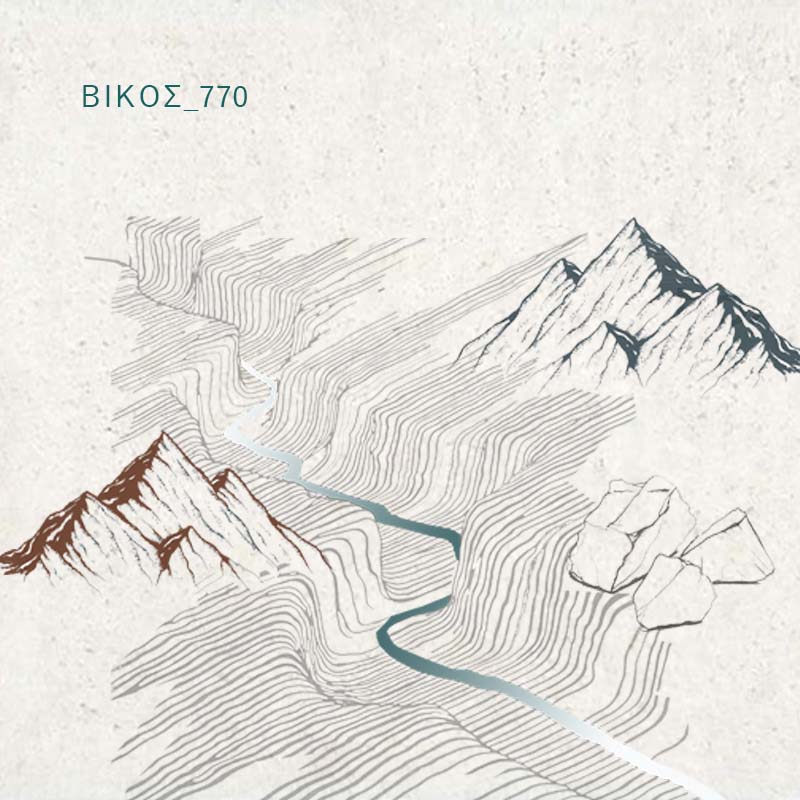



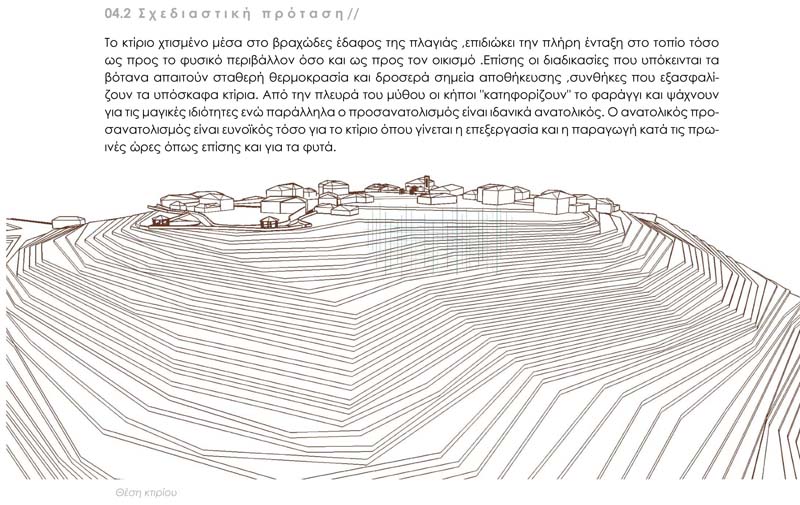

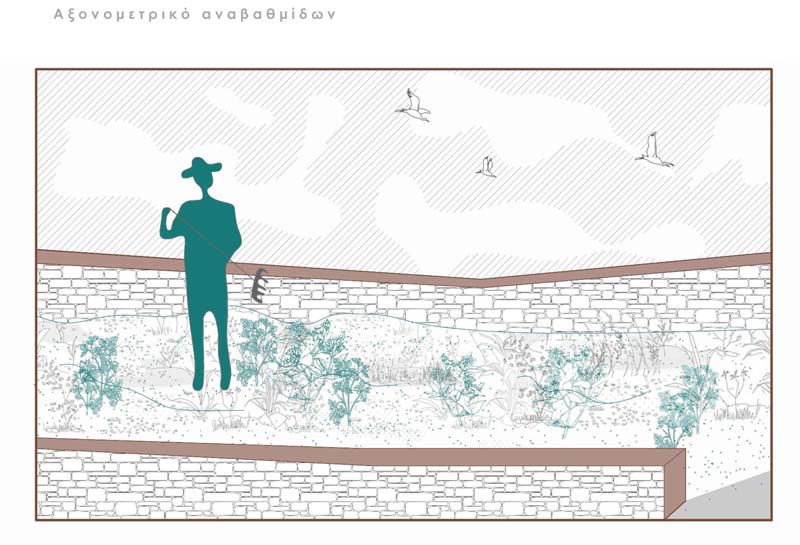

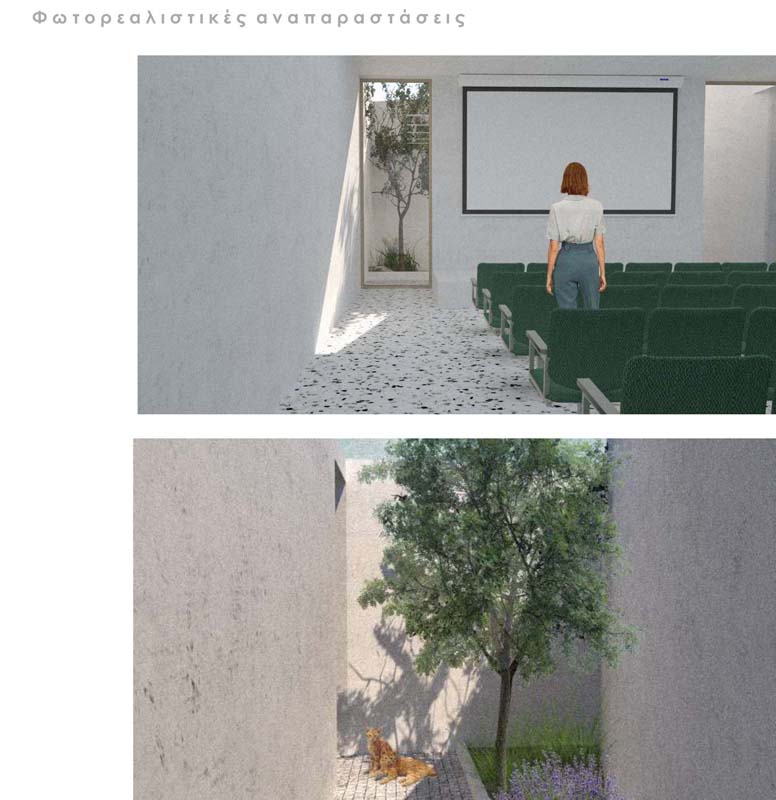



This subject attempts to approach the strong dialectical relationship between the natural landscape and the built area. The terrain, the climate and human intervention are the three components that constitute the landscape. Any building activity in it is an intervention and at the same time a way to access it. Man inextricably intervenes in nature, in order to create better living conditions. In this dissertation we will explore how architecture that is timeless and unaffiliated with time, can be created in the landscape that contains it. The area of the settlement of Vikos above the homonymous gorge, is chosen as a model for the implementation of the idea. Surrounded by the mountains of Tymfi, Vikos is one of the four settlements located in the Vikos-Aoos National Park, a fact that makes it rich both in terms of flora and fauna. The place is directly connected with the myth that wants the herbs that "go down" the ravine to have healing - almost magical properties for the cure of various diseases, a fact that is also reinforced by the actions of the Vikophysicians (practical healers) during the last century. All of the above in combination with the stagnation that has occurred in the settlement in the last decades goads a series of interventions and configurations. More specifically, the creation of an Agricultural Center that deals with the cultivation and processing of the local herbs, as well as a series of solutions concerning the key points of the settlement such as its entrance, the gorge sighting point and the old primary school in the central square are proposed. The above design proposals are accompanied by a series of diagrams in the context of a macroscopic study of the area, the materials, the plantation and other factors that comprise the proposal.
Supervisor: Manolidis Kostas
Reference Number: 888
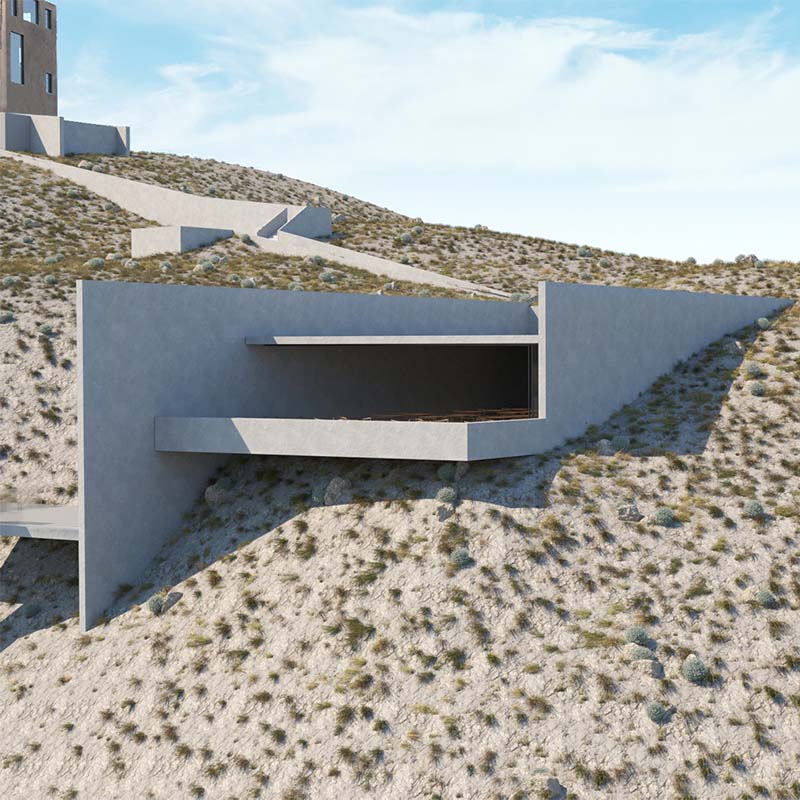



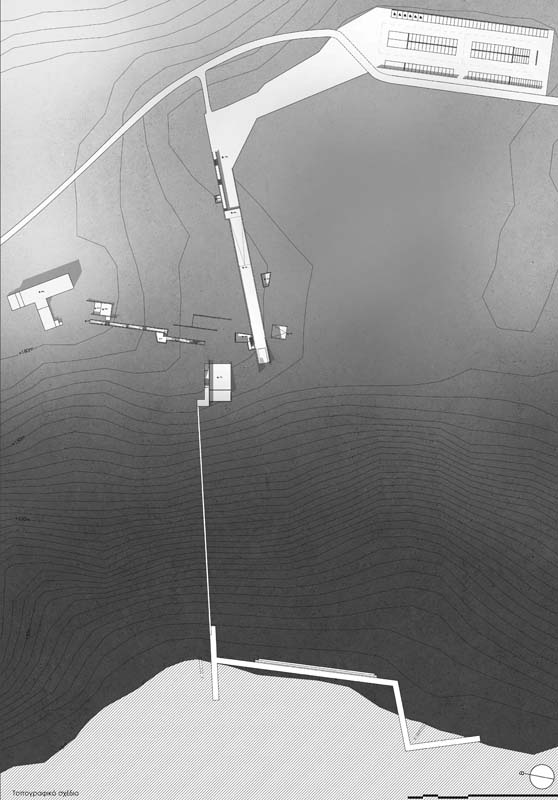

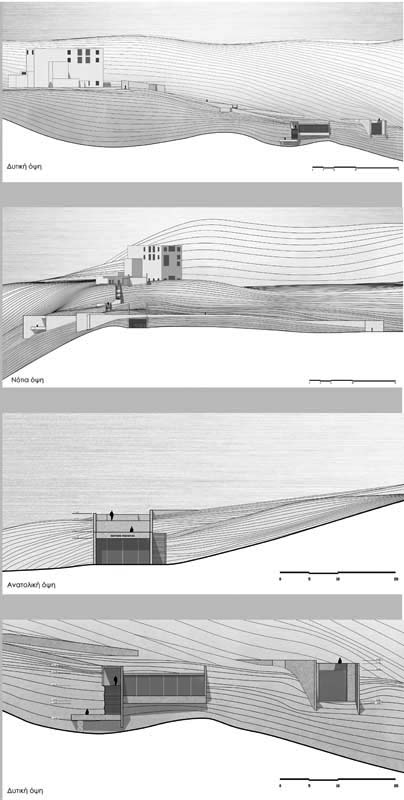



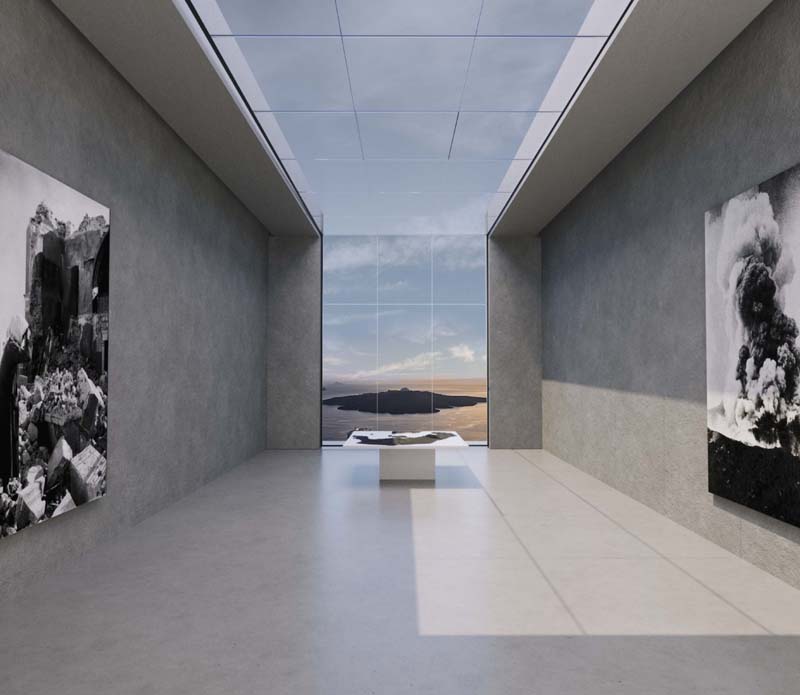

This diploma thesis presents a proposal for the creation of a Museum of Geology in Santorini, with the aim to promote the geological history of the island and to explore the former quarry zone of the extraction of Thera land and pumice stone, which is located in the community of Fira.
The main outlines of the shape of the building come from the imaginable vectors to the volcano and to the listed building located in the area. In this way, it is attempted to ‘frame’ the main visual escapes where each reference point is located. As the content of the museum exhibits are divided into two themes, a museum of geology and rocks of the island and a museum for the extraction of Thera land, each building mass contains exhibits and information about the reference point that inspired its form and is 'framed' in the edge of each of these masses. The mass of the construction is underground, on the one hand so as not to alter the contour and the character of the place and on the other hand to put the visitor into a dark route inside the land, which makes the tour experiential.
The mines of Thera land of Santorini are a monument of the industrial heritage, it is an open geological museum, but at the same time it reflects the historical and social development of the island. One of the aims of this thesis is to highlight the above points in a discreet way that respects the environment and the heritage of the place.
Supervisor: Symeonidou Ioanna
Reference Number: 851
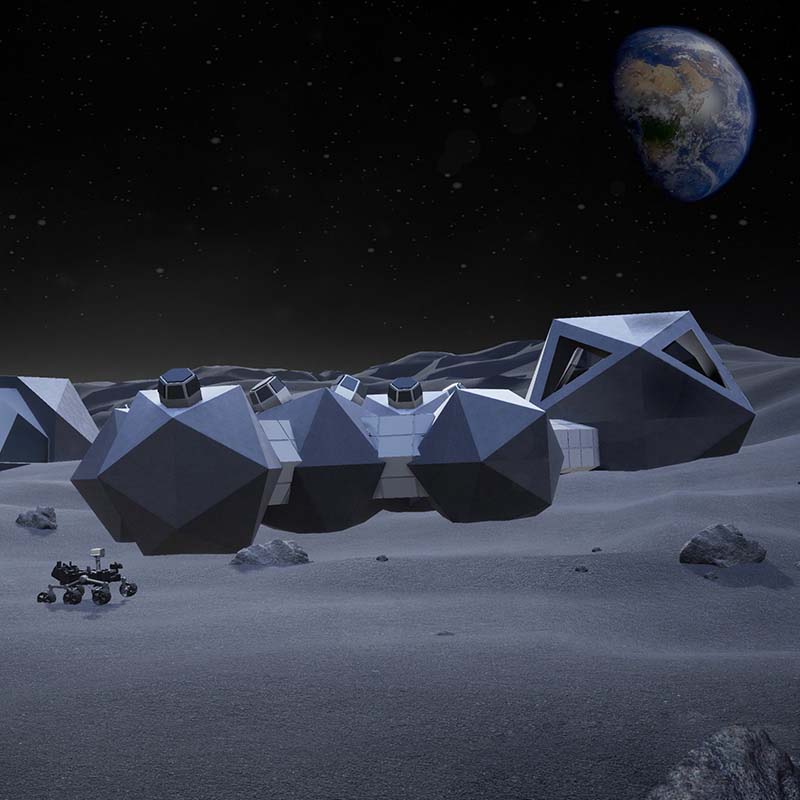

The subject of this dissertation is the design of a permanent lunar research station. Man, driven by his desire for exploration, has always dreamed of colonizing other planets outside Earth. It would, therefore, make more sense to focus initially on the nearest celestial body, the Moon. However, the lunar environment is extremely inhospitable to human physiology. Therefore, humans would have to learn how to cope with adverse conditions and with access to very limited resources. Scientists from all over the world, who have been conducting research and experiments for at least the last decade, want to meet this challenge. Based on this and from data taken from research centers such as NASA and ESA, we have designed a base suitable for living and working for researchers and astronauts. More specifically, this base will allow people to stay and work on the moon for short periods of time in order to study and optimize new technologies, test and utilize lunar materials and grow crops. It is designed in a way that utilizes local materials, as well as new technologies and also allows for future building additions if an expansion is needed for the accommodation of more researchers or uses. Architecture plays an important role in all this, as key factors in this project are the structure and configuration of the space, the use of appropriate materials and the solution of all technical issues. After all, if we seek to become interplanetary beings, our initial goal and our first space stop is our nearby Moon.
Supervisor: Symeonidou Ioanna
Reference Number: 892
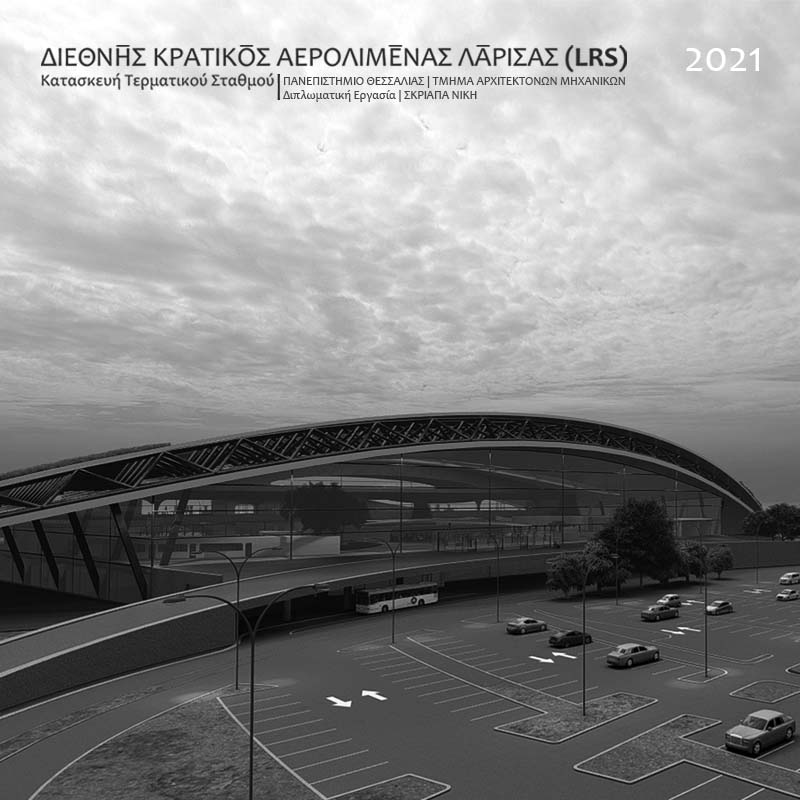

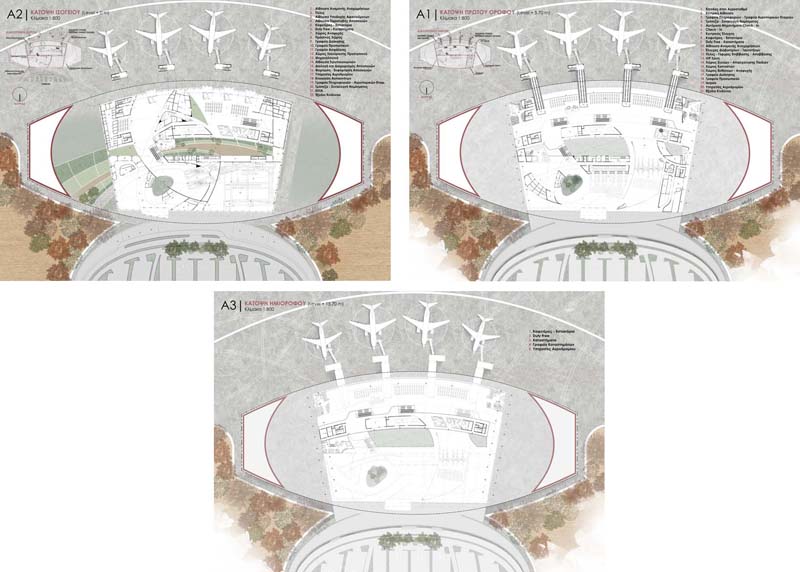

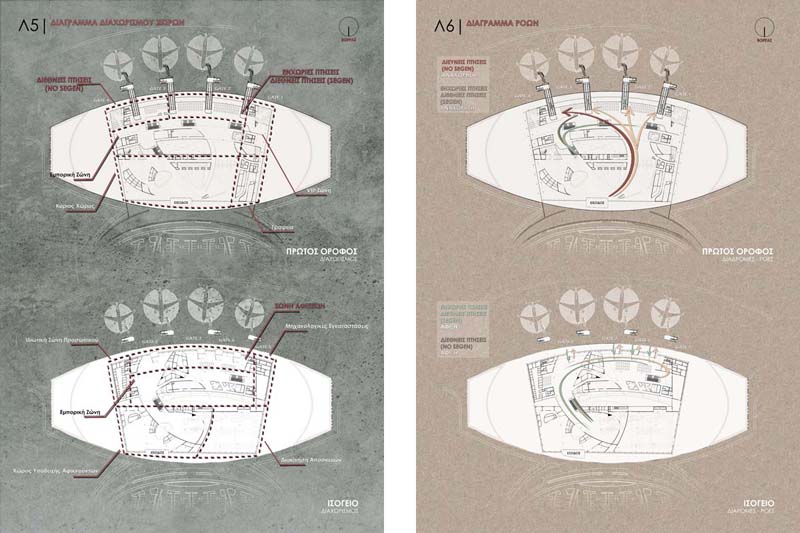

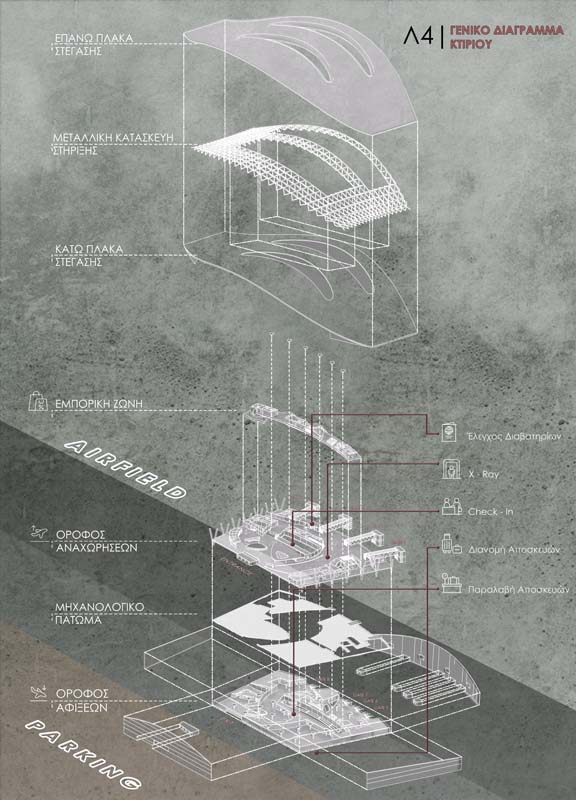

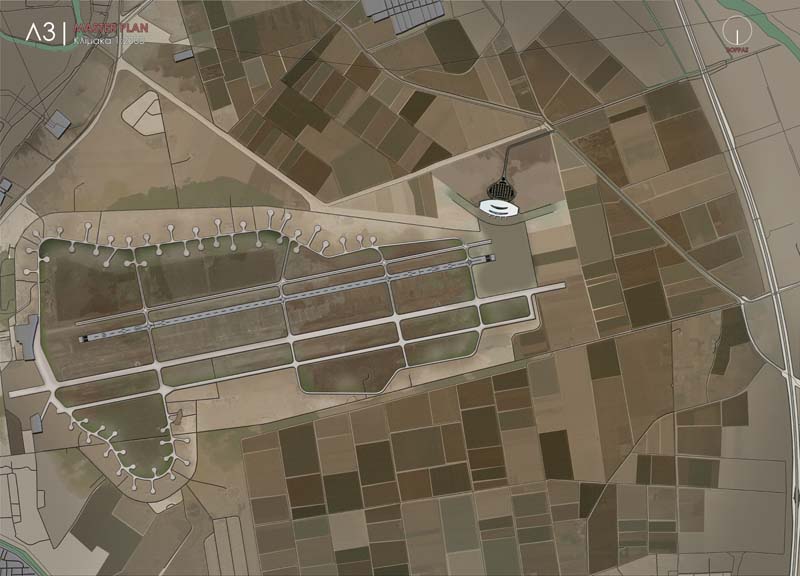

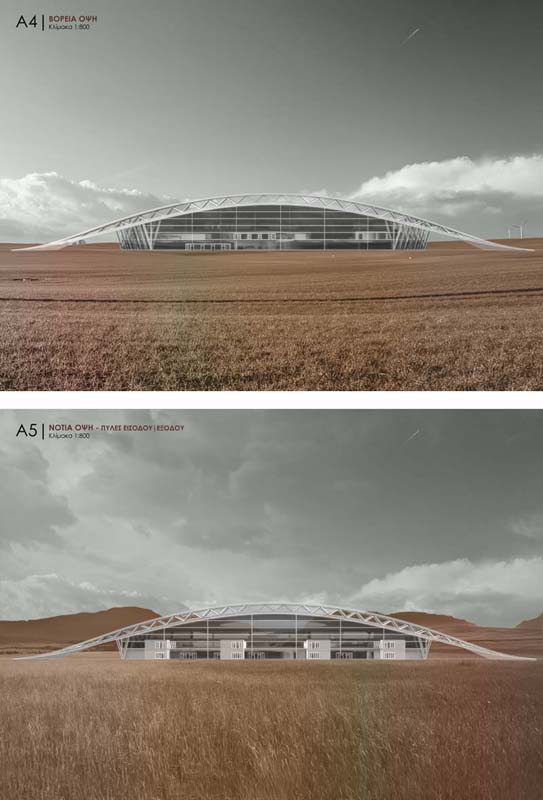

Air transport plays a key role, both for the economic, political, and cultural development of a place, as well as for the exchange of ideas, mentalities, cultural and technological elements between the whole world. They are the most important and direct liaison body of the areas on the earth's surface, as they follow aerial routes that are not cut off by territorial obstacles and seas. Their evolution was a turning point for the whole world and created new needs, expectations, and dreams for people, achieving their desire to see the world from above.
Today every major city or even every inaccessible destination has facilities that offer this aerial experience, serving the main reasons for economy and survival. These facilities, known as airports, to establish themselves in an area require a wealth of studies on the physical specifications of that area as well as the extent of the necessity and economic capacity for the operation of an airport.
In recent years there has been a need to establish a new airport. The lion's share of all the placements is held with a rough estimate by the citizens of Larissa who believe that their city needs a political airport and even directly. The city of Larissa is considered one of the most important and fastest growing urban and commercial centers in the country, as well as a hub for communications and transport. The town of Larissa has airport facilities that belongs to air force, which was the first landing of a Greek aircraft under the name "Daedalus" on September 29, 1912. In the past, this airport operated civilian flights in cooperation with Olympic Airways. However, its operation as a political airport was interrupted by its lack of facilities and reduced traffic.
However, the issue of the reopening of the political airport of Larissa alongside with the military airport, is a proposal that has been discussed over the years not only by the residents of the prefecture but is also an overall pursuit of the prefectures of Karditsa, Trikala and Pieria, as the existing airport of N. Anchialos is not the airport of Central Greece because it is not used by transport.
Evaluating all proposals, the subject of this Diplomatic research is the creation of a new international airport in the town of Larissa. The purpose is, to design the terminal station of the airport according to the global standards and rules. The exact location of the airport is described in the northeastern part of the city, close to the boundaries of the existing military airport, but without interfering inside it. The New Larissa International Airport (LRS) would be a travel area where it is possible to travel and arrive in the city via fixed-wing aircraft, planes. The flights will be operated within Greece and some flights will also be operated in certain countries abroad that belong or do not belong to the European Union.
The main facilities of an airport concern all the runways where the take-off takes place – landing of the planes and the interconnection building of the aerial with the ground world, the terminal building. The movement of people inside the terminal is systematized, following a strict flow due to its strict building program. Its design requires special flexibility as the spaces created are selectively accessible depending on the purpose of each person's visit.
The building of the terminal promotes the architecture of the crowd, it is the meeting place of people of different nationalities, ages and destinations. Due to the stringency of the routes, the movements inside are continuous and fast causing stress to people. Its design should therefore be aimed at reassuring them and creating a sense of security. The most successful approach to this goal is to try to integrate nature within it. The city of Larissa is a large town that extends to the largest lowland area of Greece, the Thessalian plain. Innumerable areas of fields surround it creating a set of random rectangular patterns in colors of green and brown. The entire urban fabric is connected to the surrounding crops of the villages creating a "smooth morphological continuity" with minimal elevation differences in the form of "lofts". Known over the years for her intense involvement in rural life and grain production. My inspiration, then, was the main source of life, occupation, and economy of the city, the plain and specifically the cereals.
Supervisor: Trova Vasso
Reference Number: 874
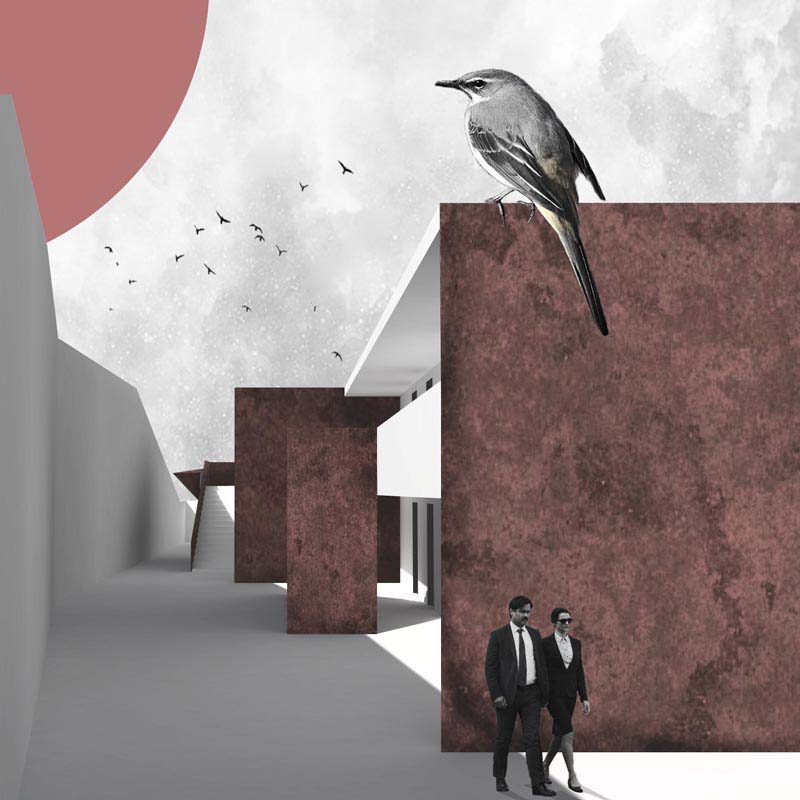

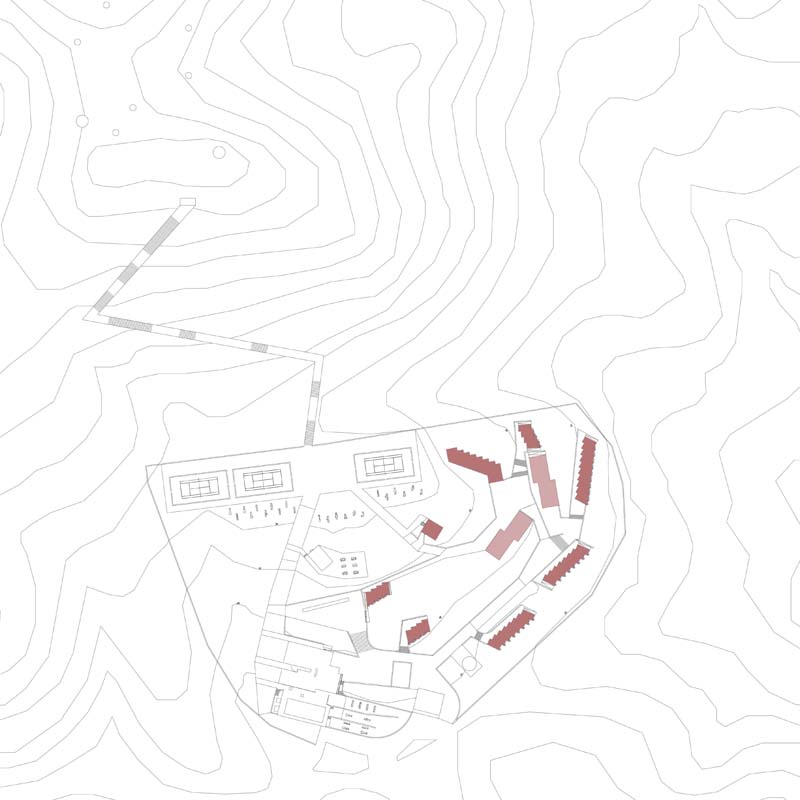

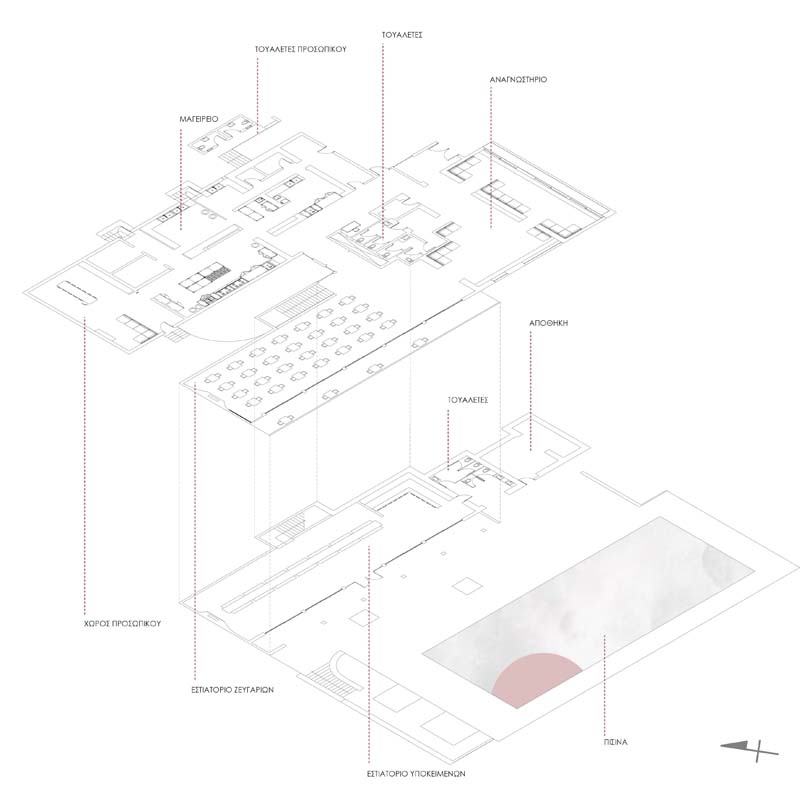



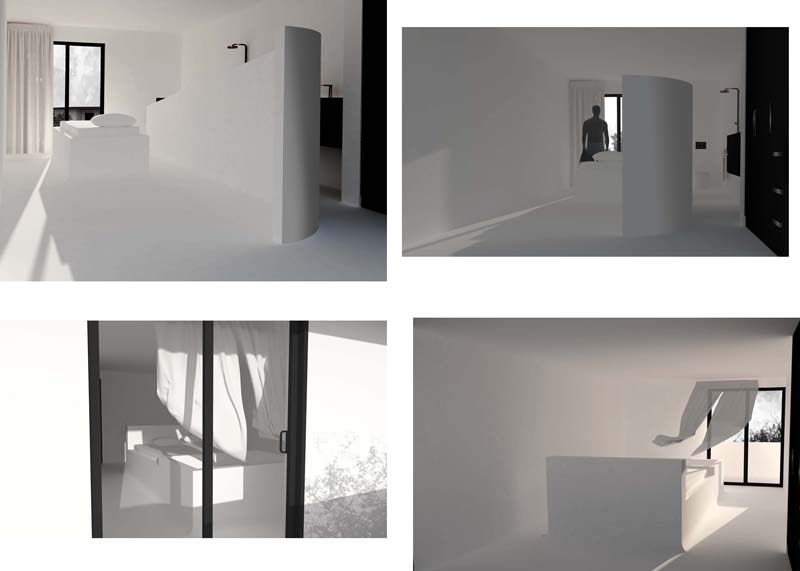

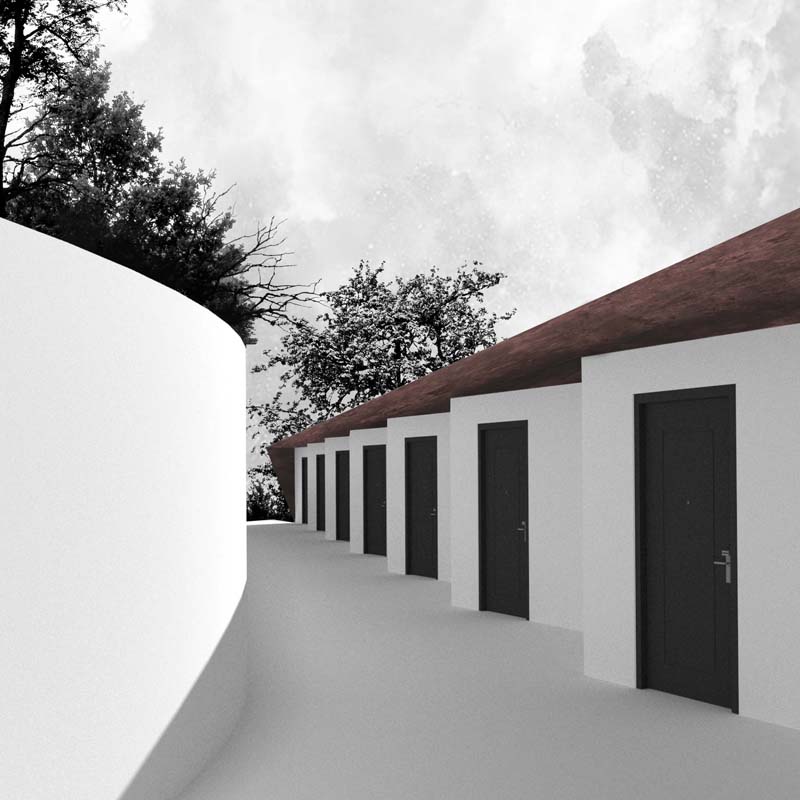

In the distant 2050, some findings brought to light in the area of Sounio, will bring about the resurface of a forgotten deity. The local society is affected, and as a result human relationships alter too. An abandoned hotel will constitute the base for the creation of the first Structure of Companionship. Every subject that enters the Structure has 45 days to find a spouse. If not, he or she will have to continue living but as a bird. One hotel, ancient columns, birds, subjects and spouses coexist in the National Park of Sounio. Elements of the movie of Giorgos Lanthimos “The Lobster”, the depositor of Athena’s temple in Sounio, and the bird fauna of the area, are not a part of the present anymore and are transcended into a fleeting reflection of a future that is not likely to exist.
Supervisor: Mitroulias Giorgos
Reference Number: 883
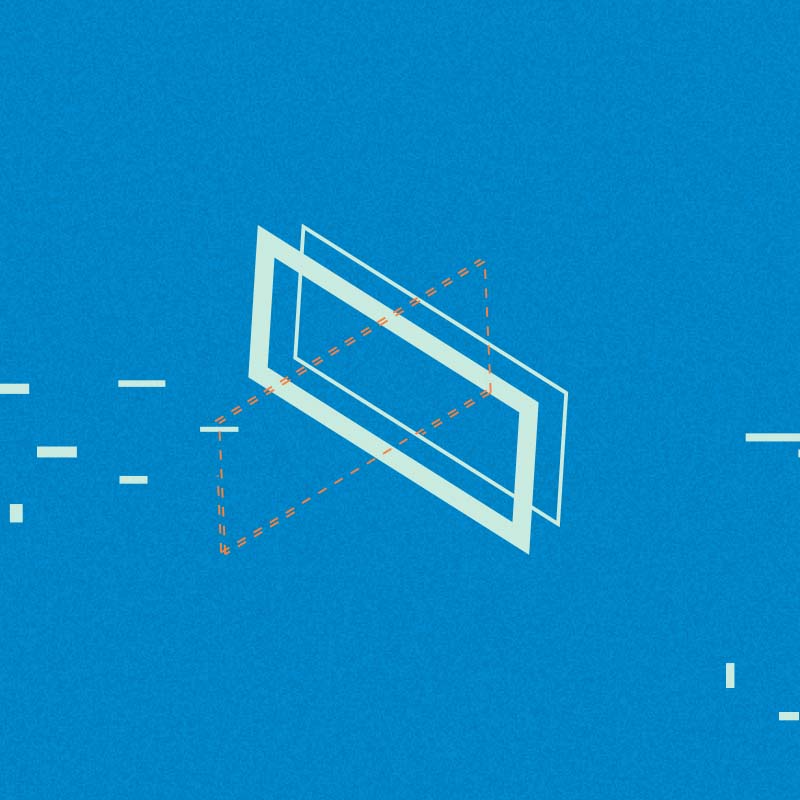

In the narrative that is to follow the protagonist will be the city or the public space and the people who occupy it. We wanted to imagine a structure that would be a place for conciliation and the emergence of short stories. Our synthetic course started by reimagining small fragments of the city which we wanted to transform into the sphere of public coexistence. We were drawn to the imaginary aspect of the city which we formed through cinematic recordings. There we saw a city in which the sea is the protagonist, often leaving the building out of the narrative. As Thessaloniki is filmed, the fitting of the frames will display the sea multiple times. This is how the city is experienced. With the gaze often towards the wave creating paths and wanderings near the water. We look at the polluted waters from a distance and finally the sea acquires an almost exhibition character.
But we see people to the east diving and playing with her in a scene with the city in the background to their right. This is how the urban diving ritual came about. To this is added his ritual cinema, setting the condition of cinema watching as a design trigger. Having the ritual of cinema watching as a guide for the movements and gazes but this time this takes place not in a dark and closed cinema theatre but in a public space. The cinematic spectacle is replaced by the city itself which, as ubiquitous, will always resonate with the rhythm of the narrative. Thus arose a plateau in which the concepts of spectator, spectacle and conciliation of the two will be fluid. The synergies of the place and the people will be overlapped by the now embodied interaction with the water.
Supervisor: Gavrilou Evelyn
Reference Number: 881

